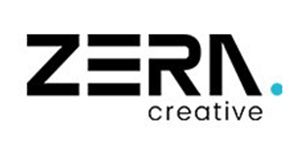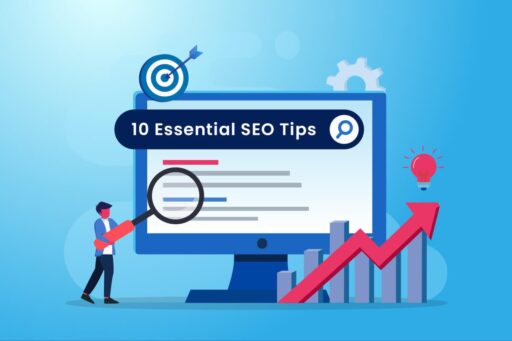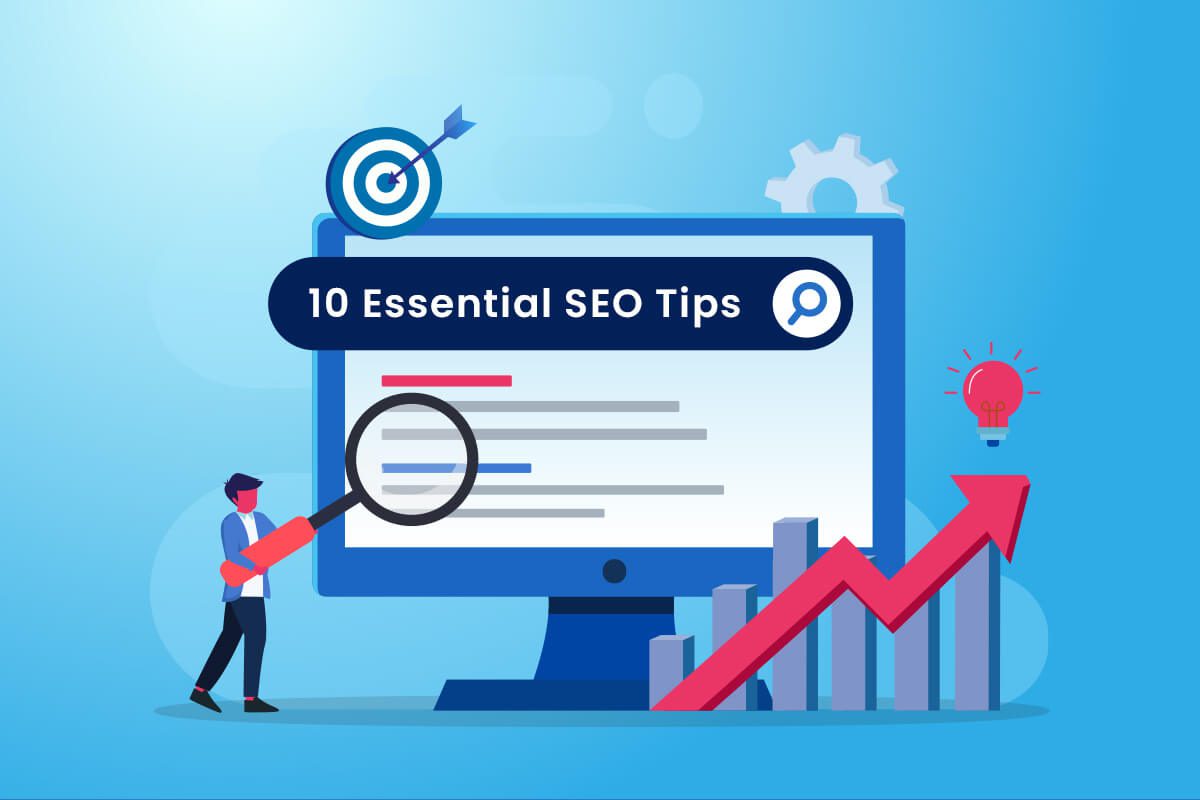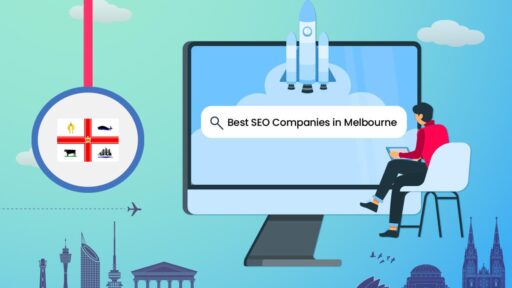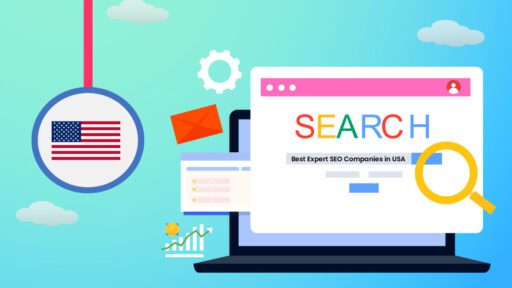Search engine optimization (or aka SEO) is the process of improving the quality and quantity of traffic to your website through organic search engine results. With millions of websites on the internet, SEO has become a crucial factor in gaining visibility and attracting potential customers. However, mastering SEO can be challenging, especially with the constant updates and changes to search engine algorithms.
To help you improve your website’s ranking, we’ve compiled 10 essential SEO tips for boosting your website’s ranking that you can implement today.
1. Conduct Keyword Research
Keyword research is the process of identifying the keywords and phrases that potential customers use to search for your products or services. It is essential to understand the language and search behavior of your target audience to optimize your content and improve your website’s ranking.
Start by using keyword research tools such as Google Keyword Planner, Ahrefs, or SEMrush to identify high-volume and relevant keywords for your industry. Focus on long-tail keywords, which are more specific and have a lower search volume but tend to have higher conversion rates.
Once you’ve identified your target keywords, incorporate them naturally throughout your website’s content, including in the title tags, meta descriptions, headers, and body copy.
2. Use the Right Keywords for your Business
There are two types of search engines: Google and Bing. Google is by far the most popular, with more than 90% market share in 2018. However, Bing still has significant traffic and should be considered when choosing keywords to optimize your content on search engines other than Google’s (e.g., Yahoo, Baidu).
Use long-tail keywords instead of short phrases or words–the longer the keyword phrase gets, the more likely it will appear at the top of Google results pages when people type it in their browsers’ search boxes (or simply copy/paste it from another website). Longer phrases often have less competition because there are fewer sites competing for attention among users searching for them specifically; thus when someone does find one result for their keyword phrase by typing it into their browser bar or copying down its URL from another source material such as Twitter or Facebook Page’s profile posts etcetera…it’ll rank higher than shorter versions since those don’t include any additional information about what exactly this particular piece of content intends to convey.”
3. Create an Effective Title
The title of your page is the most important piece of content on your website. It should be accurate, descriptive, and keyword rich. The title should also be short and concise but not too short as this might make it hard for people to read or understand what you have written in it. You can use a combination of keywords from different categories if possible so that Google knows how relevant your content is to their users’ search queries (and hence how good they will rank).
The next thing you need to consider when writing an SEO-friendly title is its uniqueness as well as relevance with regard to what’s being discussed in the body paragraphs/sections below it – which means making sure that no two titles are exactly alike!
Finally – make sure that whatever title you choose doesn’t frustrate visitors into clicking away from our site before they’ve even gotten started because then there would be no point doing all this hard work anyway!
4. Optimize On-Page Elements
On-page optimization involves optimizing the content and HTML source code of your website to improve its relevance to specific keywords and phrases. On-page elements include title tags, meta descriptions, header tags, images, and internal links.
Title tags and meta descriptions are critical on-page elements that provide information about the content of your page to search engines and potential visitors. Make sure to include your target keywords in these elements and keep them concise and compelling to encourage clicks.
Header tags (H1, H2, H3, etc.) provide structure to your content and make it easier for search engines to understand its hierarchy. Incorporate your target keywords into your headers while maintaining a natural flow and avoiding keyword stuffing.
Images are an essential element of any website, but they can also slow down your page’s loading speed. Optimize your images by compressing them without sacrificing quality and adding alt text that includes your target keywords.
Finally, internal linking helps search engines understand the structure of your website and the relevance of its pages to each other. Include internal links in your content to guide visitors through your site and improve its ranking.
5. Focus on User Experience
User experience (UX) refers to how easy and enjoyable it is for visitors to interact with your website. A positive UX can lead to longer visit durations, higher engagement, and ultimately, higher rankings.
Start by ensuring that your website is mobile-friendly and loads quickly. Use a responsive design that adapts to different screen sizes and eliminates unnecessary elements that slow down your website’s loading speed.
Make sure that your website is easy to navigate, with clear and concise menus that guide visitors through your content. Use intuitive and descriptive URLs that reflect the content of your pages and make it easy for visitors to share and link to your website.
Finally, focus on creating high-quality content that meets the needs and interests of your target audience. Use a mix of formats, including text, images, and videos, to provide value and encourage engagement.


6. Add Some Basic SEO to your Site (301 Redirects, Meta Tags, Etc.)
There are a few things you can do to make sure that search engines like Google have a good understanding of your content and can find it easily when people search for it. The first thing you should do is add 301 redirects so that users will be directed back to the proper page when they enter an old URL into their browser or other search engine tool at any time after updating their keyword research results with better ones. This will help prevent duplicate content issues which can hurt rankings in Google’s eyes as well as other major search engines such as Bing or Yahoo!
7. Make Sure your Site is Mobile-Friendly
Mobile users are consuming more content than ever, meaning they have a higher likelihood of finding you on the first page of their search results. If your site isn’t optimized for mobile devices, you could be missing out on potential customers!
To determine whether or not your current website is responsive or not, check if it loads fast on mobile devices by using Google’s Page Speed Insights tool (set up an account). This will tell you how well your site performs during page load time–the amount of time between clicking “back” in a browser and seeing what was previously loaded in order for new content to appear on the screen.
It also gives insight into how well each individual page performs when viewed across different dimensions: resolution size; device type; connection speed etc.
8. Make Sure You’re Not Over optimizing For Google’s Crawlers or Bots
Google’s crawlers (the robots that crawl the web) and bots (automated programs that perform certain tasks on a website) are known to have trouble processing unnatural language. This means that if you’re writing more than one page of text and you use all caps, your content will be ignored by Google.
Google wants to see natural language, not robots. If it can’t understand what your site says, it won’t rank well in search results–and this goes for both traditional search engines like Bing or Yahoo! as well as social media platforms like Facebook and Twitter!
9. Get on Google Webmaster Tools and Make Updates When Needed
Google Webmaster Tools is a free tool that you can use to keep track of your website. It allows you to see what keywords are being searched for, where they’re coming from, and how many results there are. You can also view the changes that have been made on your site since it was last indexed by Google (a process called “freshness”).
10. Build High-Quality Backlinks
Backlinks are links from other websites that point to your site. They are one of the most critical factors in search engine rankings, as they signal to search engines that your website is credible and authoritative.
To build high-quality backlinks, start by creating valuable and relevant content that other websites want to link to. Share your content on social media and reach out to other websites in your industry to request a link back to your site.
Conclusion
So far, we’ve talked about how to come up with keywords and titles that match your business. We’ve also discussed the importance of creating compelling content for your website, and how to optimize it by adding high-quality images, videos, and audio files.
In addition to these basic SEO tips and trends, there are many other ways you can increase your website’s rankings in major search engine results pages (SERPs) like measurement insights into their algorithms for ranking factors such as user experience or relevancy.

